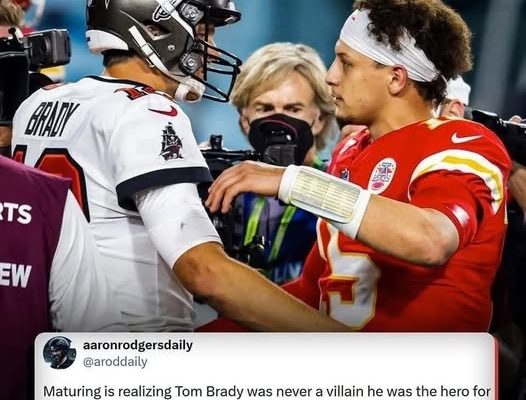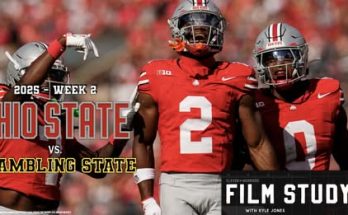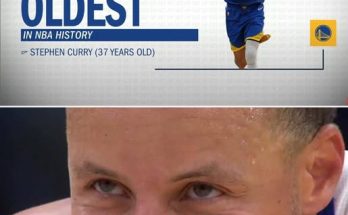In the long history of professional sports, there are few figures as polarizing, enduring, and ultimately transformative as Tom Brady. He was a player who entered the NFL as a relative unknown, drafted with the 199th pick in the 2000 NFL Draft, a number that would eventually become iconic in its own right. From that moment forward, Brady’s career became the stuff of legends, filled with triumph, controversy, and a journey that read like a classical hero’s tale. But unlike the flawless hero often celebrated in myths, Brady carried with him the qualities of a villain—an antagonist to rival fans, an embodiment of dominance that many sought to tear down. Yet, his redemption arc—whether it came through perseverance, reinvention, or simply the inevitability of time—turned him into more than a champion. He became a figure that transcended football, a living story of what it means to fall, rise, and rewrite the narrative of one’s legacy.
When Brady first took over the reins in New England after Drew Bledsoe’s injury in 2001, he was far from the villain that fans across the league would grow to despise. He was the underdog, the scrappy backup thrust into the spotlight, a kid from Michigan with a chip on his shoulder and a relentless drive to prove he belonged. He led the Patriots to a shocking Super Bowl victory over the heavily favored St. Louis Rams, setting the stage for a dynasty. At that time, many admired him. He was humble, poised, and representative of the classic American dream story—overlooked but refusing to be denied. Yet as the Patriots began to win, and win often, Brady’s image transformed. With each Lombardi Trophy, the underdog persona eroded, replaced by an aura of invincibility that rival fans quickly resented. What was once inspirational turned into dominance, and dominance always breeds enemies.
The villain arc for Tom Brady accelerated with the rise of the Patriots’ dynasty under Bill Belichick. The team’s success seemed machine-like, relentless, and often devoid of the underdog spirit that initially made them endearing. The Patriots became the “Evil Empire” of the NFL, much like the New York Yankees in baseball or the Golden State Warriors in basketball. Their formula for victory—ruthless efficiency, mental toughness, and meticulous preparation—was effective but alienating. Fans outside New England grew tired of seeing the same quarterback hoist the Lombardi Trophy, the same team dominate playoff brackets, and the same franchise always finding a way to come out on top. In a league built on parity and unpredictability, the Patriots’ sustained excellence was almost offensive, and Brady, as the face of that empire, bore the brunt of the hatred.
Then came the controversies that cemented his reputation as a villain in the eyes of many. “Spygate” in 2007, though more a stain on Belichick and the coaching staff than Brady directly, fueled the narrative that New England’s dynasty was built on cutting corners. But nothing compares to “Deflategate,” the 2015 scandal in which Brady was accused of being complicit in the deflation of footballs during the AFC Championship Game against the Indianapolis Colts. Whether or not the accusations held water didn’t matter to the public. Brady was suspended four games, the Patriots were fined, and the debate raged across sports media for months. For his critics, it was confirmation of what they had long suspected—that Brady’s greatness wasn’t pure, that his wins were tainted. For his fans, it was a witch hunt, a smear campaign against the most successful quarterback in the league. No matter which side one fell on, the episode pushed Brady fully into the role of villain. He was no longer simply the quarterback everyone wanted to beat; he was the quarterback many wanted to see fail.
But villains don’t stay villains forever in sports, especially when time and perspective begin to soften the sharp edges of their narratives. What followed in the aftermath of Deflategate was Brady’s redemption arc, one that played out not only on the field but in the broader context of his career and personal reinvention. His response to the suspension was nothing short of legendary. He returned with a fury in 2016, leading the Patriots to an 11-1 record in his starts, and ultimately delivering one of the greatest comebacks in sports history: Super Bowl LI against the Atlanta Falcons. Down 28-3 in the third quarter, Brady orchestrated a rally that defied belief, throwing for over 400 yards and five straight scoring drives to secure an overtime victory. That game became the defining moment of his career, a transformation of public perception. No longer just the villain, Brady was the resilient warrior who refused to yield, even when defeat seemed inevitable. The storyline was poetic—cast out, punished, doubted, only to return stronger than ever.
The redemption arc continued when Brady left New England after 20 seasons. The breakup itself was shocking—how could the greatest quarterback and the greatest coach part ways after such unparalleled success? For many, Brady’s move to the Tampa Bay Buccaneers in 2020 represented the final chapter of his story, a veteran chasing one last payday in a new city. But what unfolded became the ultimate narrative twist. In his very first season with Tampa, Brady led the Buccaneers to a Super Bowl victory, defeating Patrick Mahomes and the Kansas City Chiefs in a symbolic passing of the torch that never quite came to fruition. The victory validated Brady outside of Belichick’s system, proving that he was not simply a product of the “Patriot Way” but a singular force of will, preparation, and excellence. That title, his seventh, transformed him from villain to legend. Even the most ardent critics were forced to admit that what they were witnessing was historic. Redemption had arrived not through apology or contrition, but through continued greatness and undeniable achievement.
There is also the human side to Brady’s redemption arc, one that evolved in tandem with his athletic career. Early in his journey, he was seen as robotic, consumed by winning, and detached from the warmth fans often crave in their heroes. Over time, however, Brady embraced social media, leaned into self-deprecating humor, and showed more of his personality. Whether it was joking about avocado ice cream, poking fun at himself in commercials, or sharing more of his family life, he became more relatable, even endearing. He leaned into the role of the elder statesman of football, a figure respected across the league not only for his accomplishments but for his longevity and dedication. The villain’s sharp edges were sanded down, replaced by the aura of a legend who had stood the test of time.
Ultimately, Tom Brady’s career is a story of duality. He was both the villain and the hero, the cheater and the champion, the player everyone loved to hate and the one everyone wanted to emulate. His legacy rests not on a single narrative but on the blending of all of them into a complex portrait of greatness. His villainy gave weight to his redemption. His controversies gave context to his comebacks. His relentless pursuit of excellence, even in the face of criticism and doubt, is what turned his story into something more than football. It became a tale of resilience, transformation, and the way time allows us to see people differently than we once did.
Now, as fans and historians look back on Brady’s career, it is impossible not to marvel at the arc of his journey. He entered as an underdog, became a villain at the peak of his powers, and left as a redeemed legend who redefined what was possible in professional football. He was booed, cheered, doubted, celebrated, and immortalized. Few athletes in history have carried so many roles within one lifetime. Tom Brady’s story reminds us that greatness is rarely linear. It is messy, complicated, and often requires embracing both the shadows and the light. In the end, he was a villain with a redemption arc so complete that it turned him into one of the greatest and most fascinating figures in sports history.



